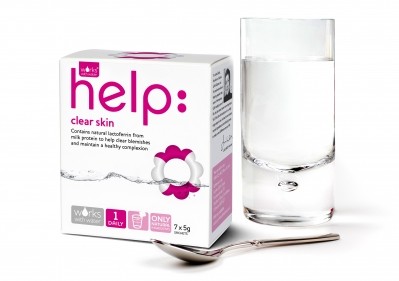Nutricosmetics industry continues to be dominated by Japan - Euromonitor
According to a new report by Euromonitor, there is strong regional disparity between East and West, as consumers in North America and Western Europe generally do not seem to be convinced by the concept of nutricosmetics.
Booming industry
Unlike the declining cosmetics industry in Japan, nutricosmetics is booming with the year 2010 seeing sales of US$1.3 bn. Beauty supplements accounted for 18 per cent of dietary supplement sales in 2006, and this figure rose to 19 per cent by 2010.
In addition, many ingredient trends and product innovations have originated in Japan, such as Nescafé with Collagen from Nestlé.
The trend for adding collagen to everyday foods and drink has caught on in other Asian countries like Vitagen Collagen drink from Vitagen, which hit the market in Malaysia recently.
Zooming ahead
Japan leads in the nutricosmetics industry as the biggest market globally with the country’s cultural acceptance being a major reason for strong sales, which amounted to US$777m in 2010.
Likewise, Japan’s extremely strict regulations also play a part in boosting sales. The country’s legislation governs the sale of many nutricosmetic products, mostly for Foods for Specific Health Use (FOSHU).
The Japanese Ministry of Health and Welfare assesses the quality of products and only issues the FOSHU seal of approval if its stringent standards are met.
The Japanese classification system lends a degree of credibility to products that measure up to its standards, giving consumers a level of trust in the products they buy, which is driving sales of nutricosmetics in the country.
The popularity of these products is also thanks to wide availability; specialist retailers dedicated solely to beauty from within help to raise the profile of the industry. This is in contrast to many other markets, where such products have a low profile amongst retailers.
Next major market
In China, current annual sales of US$813 million looks set to rise dramatically, underlined by the immense growth of the industry seen between 2006 and 2010, when sales increased US$270 million, according to the report.
The beauty from within concept also sits well with traditional Chinese medicine. Traditional herbal dietary supplements, such as E jiao, lingzhi and aweto, are widely recognised by consumers in rural areas as traditional Chinese products benefiting overall wellbeing.
Likewise, the rapid growth is greater affluency with more consumers able to afford nutricosmetics for the first time. This is underlined by the fact that the average disposable income doubled from US$800 per year in 2003 to US$1,600 in 2008, and is set to rise again to US$2,500 by 2013.
Beauty From Within Conference 2012
CosmeticsDesign has once again teamed up with its sister publication NutraIngredients to host the second Beauty From Within Conference in Paris on 27th October 2011.
This year's conference will take a look at the challenges behind the education and marketing of nutricosmetics to consumers as well as covering scientific validation, new product forms and categories and exploring how to overcome the current regulation confusion.
For more information on speakers, the programme and to book your delegate place, please visit the conference website http://www.cd-beautyfromwithin.com or email pbasreraprf@jeoz.pbz










